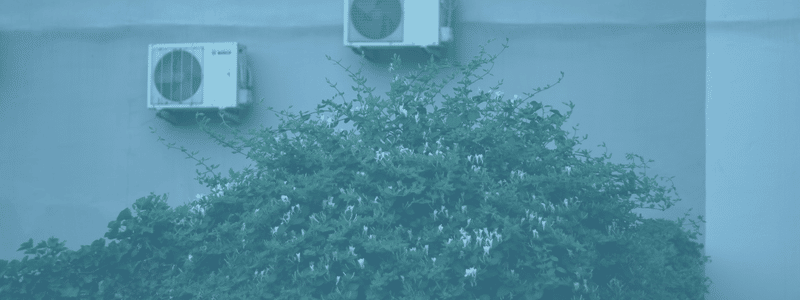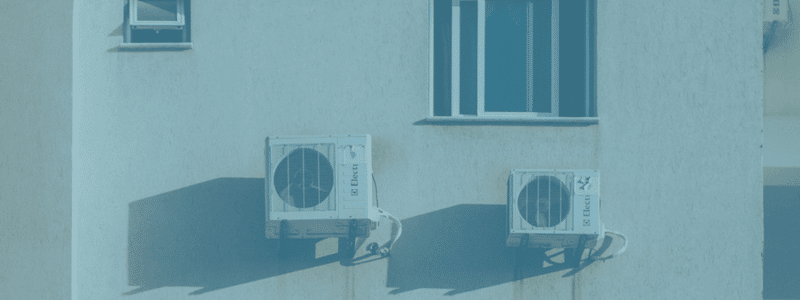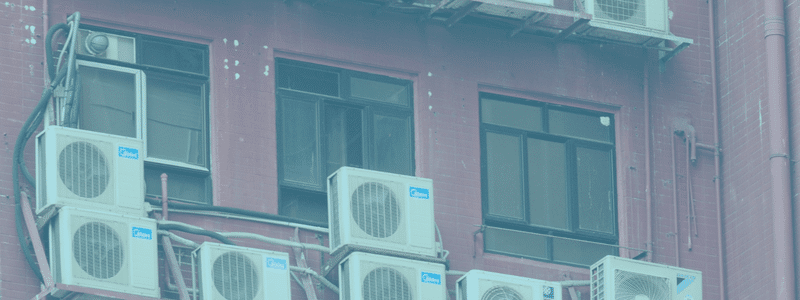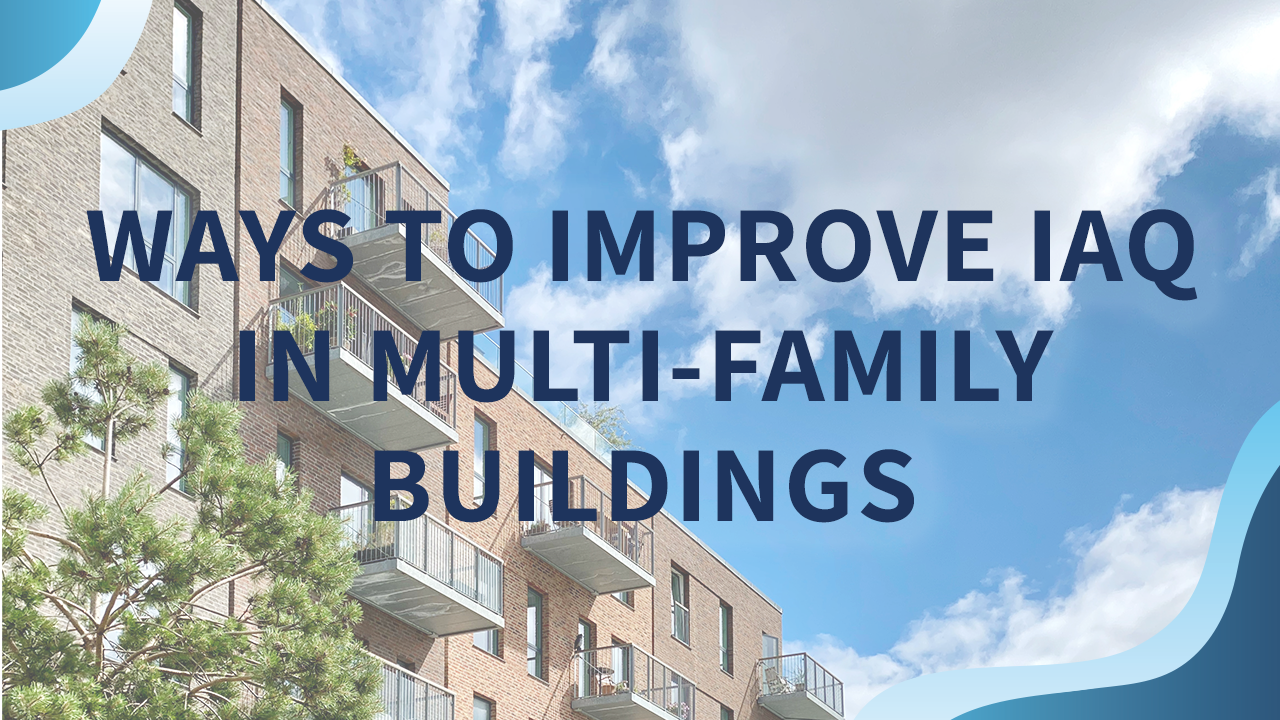When AirAdvice conducted an IAQ study of almost 50,000 American homes, it found some alarming results. An astounding 96.7% of all homes had at least one of six common IAQ problems. This includes chemicals, allergens, temperature, humidity, carbon monoxide, and carbon dioxide.
Half of the homes contained three or more pollutants, while almost one in five exhibited four or more IAQ problems.


Fortunately, a variety of methods are available to improve indoor air quality in multi-family as well as the individual homes within them, including:
Removing pollution at the source is the easiest and most efficient way to address IAQ problems within a multi-family building involving eliminating the pollution at the source.
Some issues might need professional assistance, such as fixing buildings with old asbestos that needs to be sealed off. However, many issues can be resolved internally. For example, gas stove or water heater emissions can sometimes be adjusted, the leaking equipment can be repaired or replaced, or you could purchase an air purifier.
Boost Ventilation
Most multi-family residential buildings feature HVAC systems that do not mechanize outdoor air into the house. However, property owners and managers can improve IAQ for their residents by improving ventilation within multi-family housing communities. By inviting more outdoor air inside the building, the exchange lowers the concentration of indoor pollutants. It’s the same logic behind opening a window to let smoke escape a building. Multi-family building ventilation can be improved through additional fans in ceilings, bathrooms, and kitchens and mechanical methods such as integrating outdoor air intake into HVAC systems.
Seal as Many Air Leaks as Possible
Air will travel from one unit to another through any hole or passage it can find. Air sealing, however, helps reduce unwanted air movements within a building by eliminating those leaks. Sealing even tiny gaps and openings between apartments helps improve IAQ by reducing the odors, smoke, pathogens, and other pollutants that can travel from one home to the next. Common multi-family building areas susceptible to air leaks include the roof, windows, doors, pipes, and vents.
Test IAQ
Various intelligent appliances that can monitor and test IAQ have been recently introduced. These devices can monitor indoor pollutants ranging from radon to mold. In addition, many IAQ monitors utilize the Internet of Things and a building’s Wi-Fi signal to activate an accompanying air-cleaning device.


Install Air Cleaners
A variety of devices are available to clean indoor air. However, expensive whole-house systems are unlikely to be installed in most multi-family buildings. Residents can, however, use tabletop air cleaners to improve the IAQ within their specific homes. While every air cleaner model is unique in its efficacy based on factors such as the type of filter and the amount of air drawn into the device, most tabletop models are less effective and don’t remove gaseous pollutants.
Maintain Equipment
Preventative HVAC maintenance is vital to achieving optimal IAQ in a multi-family building. HVAC technicians can ensure entire systems, including vents, filters, and ductwork, are free of debris and pollutants. Frequently changing HVAC filters alone can vastly improve IAQ. Stronger filter grades, particularly high-efficiency particulate air (HEPA) filters, are an effective solution for many particulates in the air. Still, they should be changed monthly for the best results. Anti-bacterial filters can even remove pathogens like viruses from the air before it is re-circulated in a building.
Motili’s multi-family clients benefit from preventative maintenance programs that have been shown to boost resident satisfaction by double-digit percentages.
Manage Humidity Levels
Controlling the humidity in a home not only boosts comfort but can also reduce energy consumption and hinder the reproduction of pathogens. Although homes are thought to be most comfortable when the level of relative humidity falls between 30% and 50%, the lowest amount of contaminants is found in the air when the humidity is between 40% and 60%, according to Sterling, Arundel, and Sterling in their 1985 report. Although their information was published more than 35 years ago, most multi-family buildings around in 1985 have a similar design today.
Using humidifiers and dehumidifiers to maintain a relative humidity of about 50% is a good compromise. While humidity levels within entire multi-family buildings can be challenging to control, residents can use the devices in their homes.


Know Your Pollutants
Awareness is half the battle, and indoor air pollutants can hardly be controlled if they aren’t identified. To determine the best strategies to improve IAQ in a multi-family community, property managers and residents must establish what IAQ issues they are facing. Is it a simple matter of humidity, temperature, or ventilation control? Are more severe contaminants such as carbon monoxide or mold present? Are more residents getting sick, or is smoking allowed in the building? Understanding and identifying common pollutants will help establish an effective IAQ strategy for a multi-family building.
Motili HVAC Multi-Family Technology Solutions
Motili’s platform is one of the latest innovative solutions that allows property owners and managers to efficiently manage HVAC multi-family technology projects for multiple property types like apartment communities and commercial buildings.
Sustainability, automation, and data management are core values upheld throughout the HVAC process.
The Motili solution includes a web platform that provides detailed work status and reporting, automated scheduling and contractor dispatching, text and email notifications, and a mobile app for contractors. It can easily integrate with existing client systems. Our finely-tuned process boosts efficiency, reduces cost, and can ultimately improve customer satisfaction.
Motili’s cutting-edge technology will help property owners manage their HVAC and hot water systems through technology, proactive and reactive repair, and replacement projects.
The experts at Motili possess the knowledge and tools to properly guide you through all types of HVAC projects.












